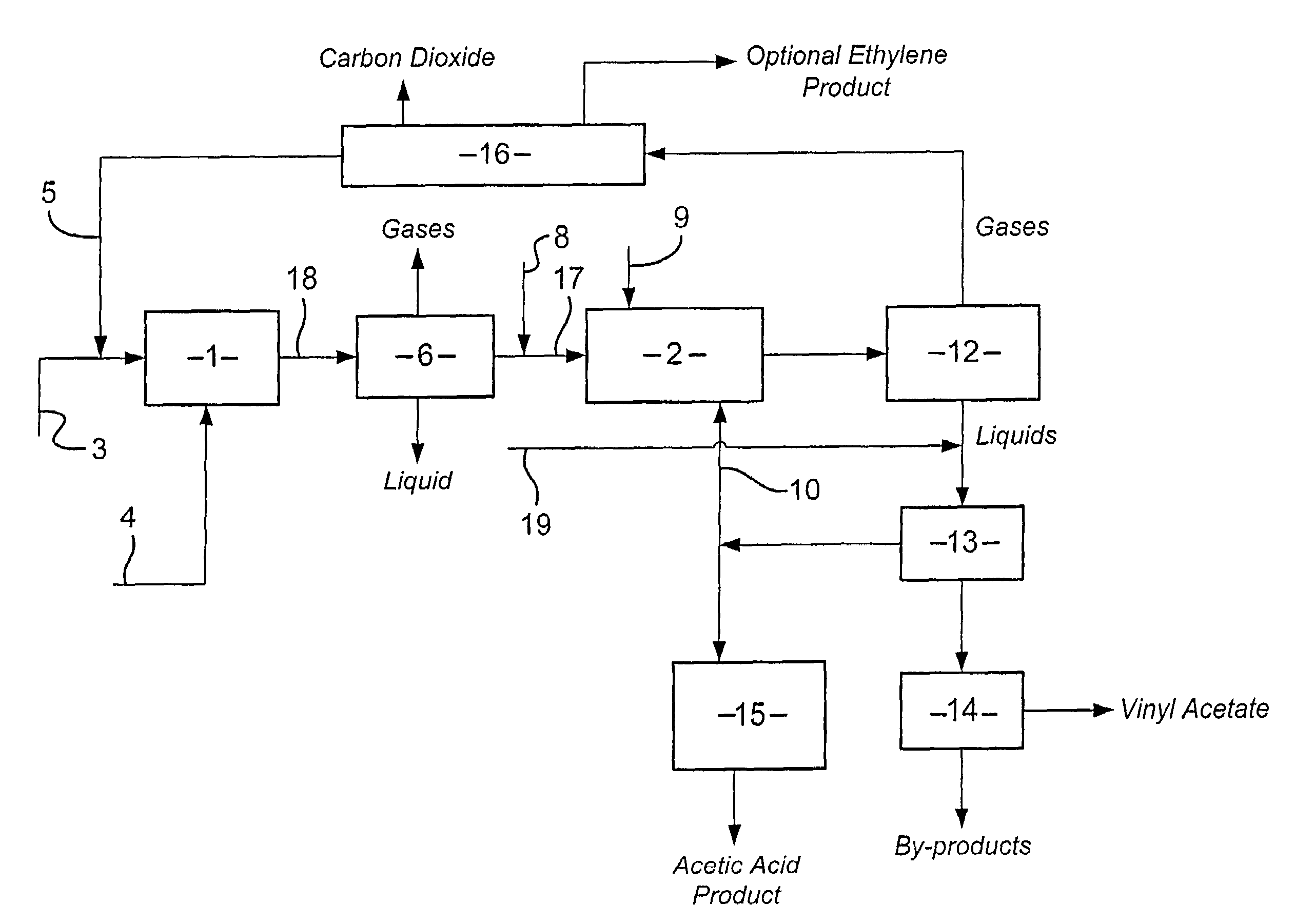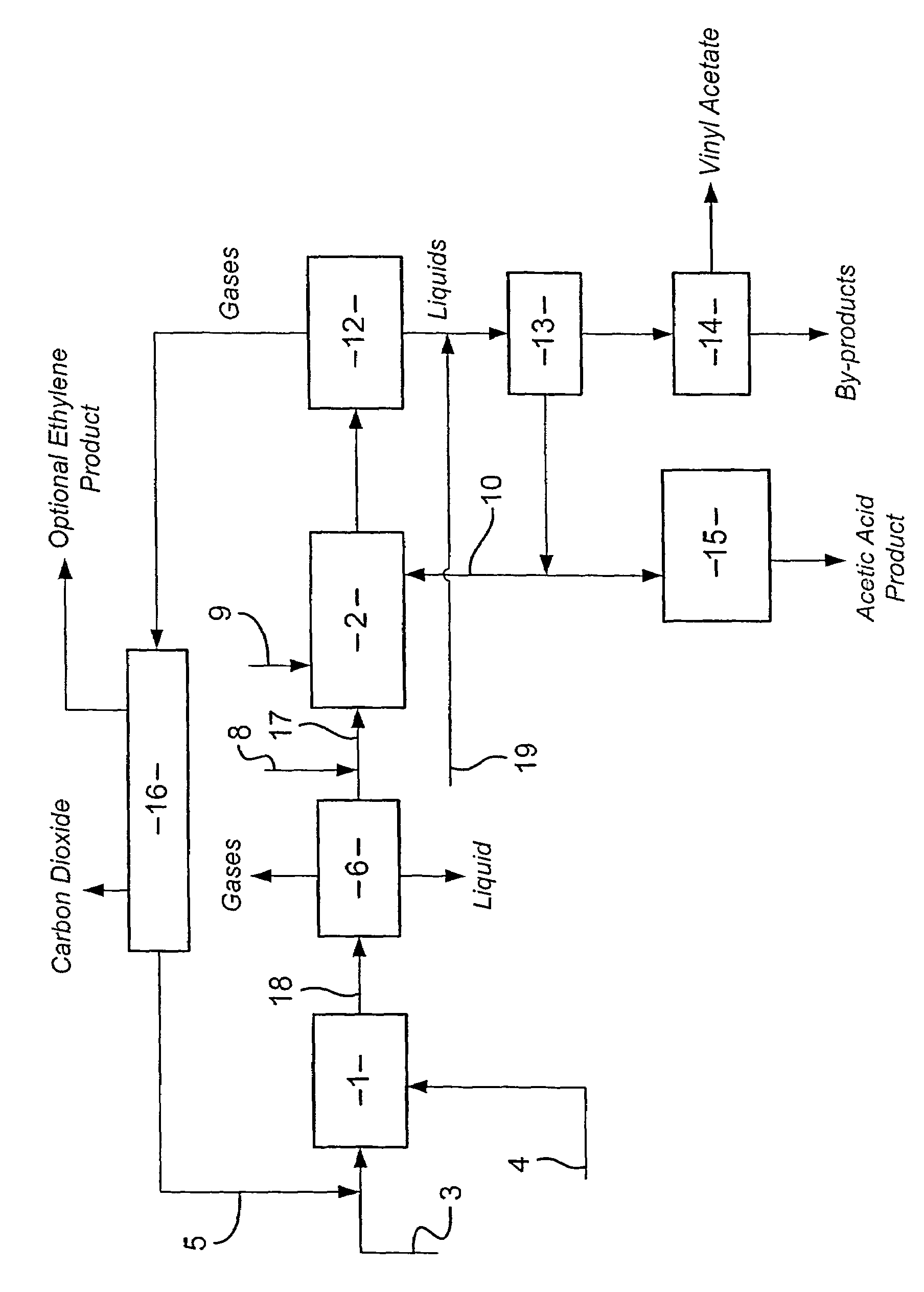Integrated process for the manufacture of alkenyl carboxylates
- Summary
- Abstract
- Description
- Claims
- Application Information
AI Technical Summary
Benefits of technology
Problems solved by technology
Method used
Image
Examples
experiment 1
[0108]A Model (A) was run using standard three phase distillation equations in ASPEN plus to simulate the azeotropic distillation in a distillation column of a feed Stream (i). Stream (i) comprised the components vinyl acetate, water and acetic acid. The overhead from the distillation column was passed to a condenser from which was removed a vapour stream and a liquid stream. The liquid stream comprising vinyl acetate was passed to a decanter. The vinyl acetate product was recovered from the organic phase of the decanter. The base stream from the distillation column was defined to comprise approximately 95 wt % acetic acid, 5 wt % water and 19 ppm vinyl acetate. A stream comprising ethyl acetate was removed as a side draw from the distillation column. An inhibitor to prevent polymerization of the vinyl acetate was fed into the top of the distillation column.
[0109]The Model used a distillation column having 42 theoretical stages with a condenser temperature of 35 C and a reboiler tem...
example 1
Model (B)
[0111]Model (A) was repeated except that the feed stream to the distillation column was a combined stream of Stream (i) and a Stream (ii). Stream (ii) comprised the components acetic acid and water.
[0112]The flow rates of the ethyl acetate side draw and vinyl acetate product streams and reflux rate are given in Table 1. Stream compositions are given in Table 3.
[0113]
TABLE 1Model (A)Model (B)kmol / hrkmol / hrReflux rate1975.008571.43Side draw2.31422.3143rateVinyl372.717368.454acetateProductrate
[0114]
TABLE 2VinylColumnDecanterAcetateSideCondenserColumnFeedAqueousProductdrawVapourBaseInhibitorComponentUnitsStreamStreamStreamstreamStreamStream(200 kg / hr)Waterkg / hr130168103.4318.812.942.34539Acetic acidkg / hr862230019.1086204VAMkg / hr31283101.63046091.7822.91.8195.7Ethylkg / hr250.140.4619.10.0085.35acetateNitrogenkg / hr975.916.733.50925.90
[0115]
TABLE 3VinylColumnDecanterAcetateSideCondenserColumnFeedAqueousProductdrawVapourBaseInhibitorComponentUnitsStreamStreamStreamStreamStreamStream...
PUM
| Property | Measurement | Unit |
|---|---|---|
| Percent by mass | aaaaa | aaaaa |
| Fraction | aaaaa | aaaaa |
| Concentration | aaaaa | aaaaa |
Abstract
Description
Claims
Application Information
 Login to View More
Login to View More - R&D Engineer
- R&D Manager
- IP Professional
- Industry Leading Data Capabilities
- Powerful AI technology
- Patent DNA Extraction
Browse by: Latest US Patents, China's latest patents, Technical Efficacy Thesaurus, Application Domain, Technology Topic, Popular Technical Reports.
© 2024 PatSnap. All rights reserved.Legal|Privacy policy|Modern Slavery Act Transparency Statement|Sitemap|About US| Contact US: help@patsnap.com









